The post Meet 5 Winter Dogs Who Enjoy Colder Weather by Lynn M. Hayner appeared first on Dogster. Copying over entire articles infringes on copyright laws. You may not be aware of it, but all of these articles were assigned, contracted and paid for, so they aren’t considered public domain. However, we appreciate that you like the article and would love it if you continued sharing just the first paragraph of an article, then linking out to the rest of the piece on Dogster.com.
What dogs besides the famous, snow-loving Saint Bernard welcome colder temperatures? Let’s talk to five other winter dogs.
Siberian Husky
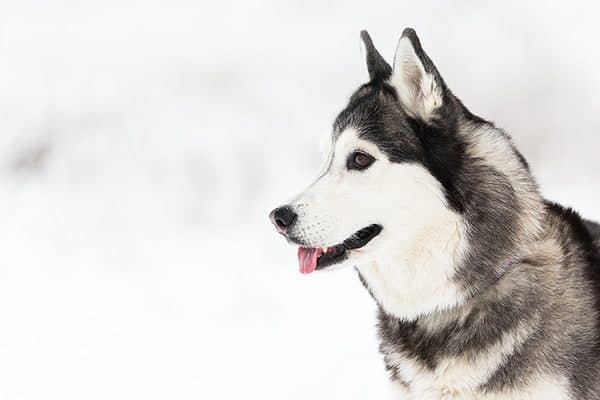
Siberian Husky. Photography ©Flickr user Irene Mei via Creative Commons License. Some size modifications have been made to fit this site.
We’re one of the breeds most rightfully associated when people think of winter dogs. We were bred thousands of years ago in northeastern Siberia by the Chukchi people to tolerate the coldest winters. Us Huskies showed great endurance, pulling sleds long distances on the smallest possible food intake. No one wants a sled dog that fills the sled with his own food!
We were also developed for adaptability and gentleness — sleeping with the children, keeping our families warm on three dog nights. Cheerful and ready for adventure, we love to dig, run, pull sleds, hike and play in snow. You might want to keep your backyard fence high: we are winter dogs who were born to run wintry trails. We love you, but we’ll likely choose adventure if a door swings open.
Black Russian Terrier
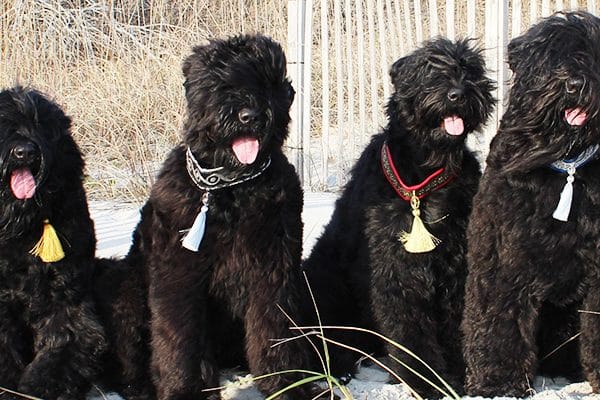
Black Russian Terriers were bred for long, cold Russian winters. Photography courtesy Dr. Richard Hawkes. Black Russian Terrier Club of America, brtca.org.
We are the Black Pearl of Russia, developed to guard people and places. The USSR bred us specifically as winter dogs, to endure its severe cold season. Of course, some areas in our vast country are warmer than others, but, in general, the winters are cold, dark and snowy indeed.
Our impressive big beard (one of our trademarks), along with our black double coat, keeps us warm. We are calm, confident, courageous and always ready for outdoor adventure. Grab your cross-country skis and a long line, and let’s try skijoring together.
Chesapeake Bay Retriever
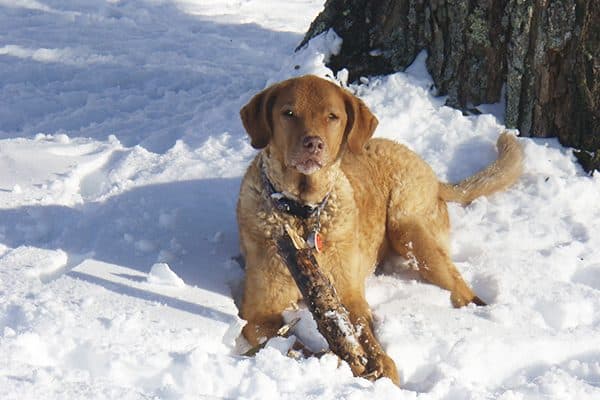
Chesapeake Bay Retrievers make great winter dogs. Photography courtesy Dyane Baldwin. American Chesapeake Club, amchessieclub.org.
We are winter dogs who are fans of snow, as well as icy-cold water. Our history starts with two (probably Newfoundland) puppies, Sailor and Canton, rescued from a ship off the Maryland shores. Bred with Spaniels and Hounds, we developed into dynamic, robust water retrievers, capable of working in the Chesapeake Bay’s cold waters. With great strength and an intense work drive, our forefathers could retrieve up to 100 birds a day.
Our coats are wonderfully suited to snow play and work. The oil in my coat and my wooly undercoat shields my skin from cold water or snow. And here’s a bonus: when you bring us indoors, we’ll dry quickly. But don’t get too comfortable in front of your fire; we recharge quickly and will soon ask to go back outdoors.
Chinook
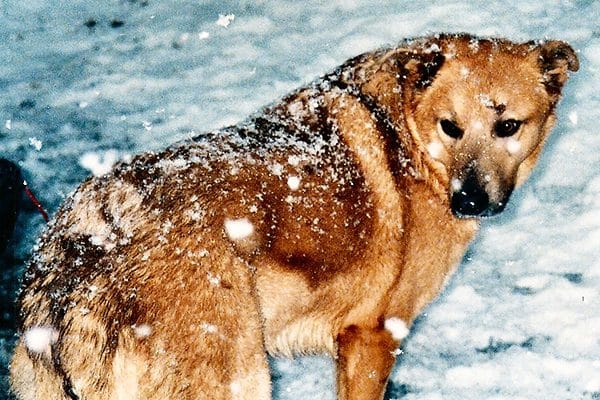
Chinooks are fans of snow and ice. Photography courtesy Ginger Corley, Chinook Owners Association, chinook.org.
We were developed in New Hampshire by Arthur Walden, a sled-dog driver. Walden specifically bred for a sled dog with speed and stamina, but also a tender disposition, particularly around children. He sought to merge the power of dog breeds that hauled cargo with the quickness of smaller racing sled dogs. Chinook, the father of our breed, became Walden’s most trusted lead dog.
Chinook and some of our other early ancestors provided vital transportation for Admiral Byrd’s Antarctica expedition. Today, we enthusiastically anticipate the first snow of the season. Have you heard of kick sledding? Or how about a snowshoe trek? You’ll need snowshoes, but our paws are at home on frosty terrain.
Lhasa Apso
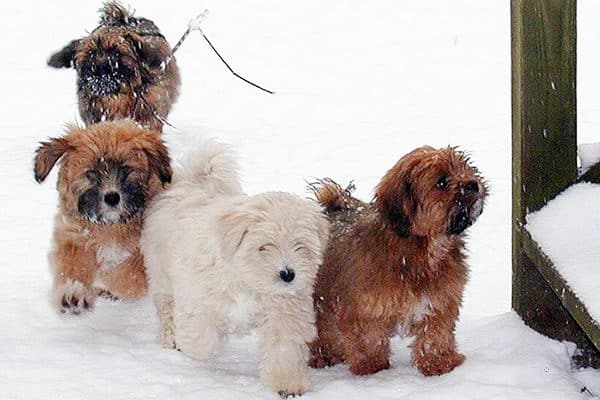
Lhasa Apsos are natural winter dogs, as they hail from “Land of Snows.” Photography courtesy Catherine Marley M.D., Kai-La-Sha Lhasa Apsos. American Lhasa Apso Club Rescue, Colorado ApsoRescueColorado.org.
Sometimes called Bark Lion Sentinel Dogs, our ancestors were developed in Tibet as indoor guard dogs. We watched over monasteries and beckoned assistance from the Tibetan Mastiffs when needed. But despite our primary indoor roles, we make perfect winter dogs, as were also developed to tolerate chilly winter walks. Tibet, after all, is the Land of Snows.
Fancy yet altogether functional, we’re cloaked in protective beauty. Now make no mistake, regardless of our warm coats, we need to live indoors and with our families. But we’ll enjoy long winter walks and won’t shirk from snow play. Snow can, however, accumulate between our paw pads, so we’ll need some extra care when we come in from the cold.
Loving these gorgeous winter dogs? These breeds are particularly active and a good fit for owners and families who can put in the time to play and interact with them. As always, do your research on breeds and breed mixes and consider your lifestyle before you adopt or choose to parent any dog.
Thumbnail: Chesapeake Bay Retriever. Photography courtesy Dyane Baldwin. American Chesapeake Club, amchessieclub.org
This piece was originally published in 2017.
Why read breed profiles?
Dog breed profiles help everyone, whether you have a mixed breed or purebred dog, to better understand and improve the quality of your dog’s life. If you have a mixed breed dog, read up on all of the breed profiles that make up your dog. Not sure what breed your dog is? There are a number of easy DNA tests out there to help your find out.
Read more about dog breeds on Dogster.com:
- 5 Dog Breeds That Are Good with Holiday Guests
- 4 Dog Breeds New to the American Kennel Club
- Meet 5 of Our Favorite Black-Coated Dog Breeds
The post Meet 5 Winter Dogs Who Enjoy Colder Weather by Lynn M. Hayner appeared first on Dogster. Copying over entire articles infringes on copyright laws. You may not be aware of it, but all of these articles were assigned, contracted and paid for, so they aren’t considered public domain. However, we appreciate that you like the article and would love it if you continued sharing just the first paragraph of an article, then linking out to the rest of the piece on Dogster.com.
No comments:
Post a Comment